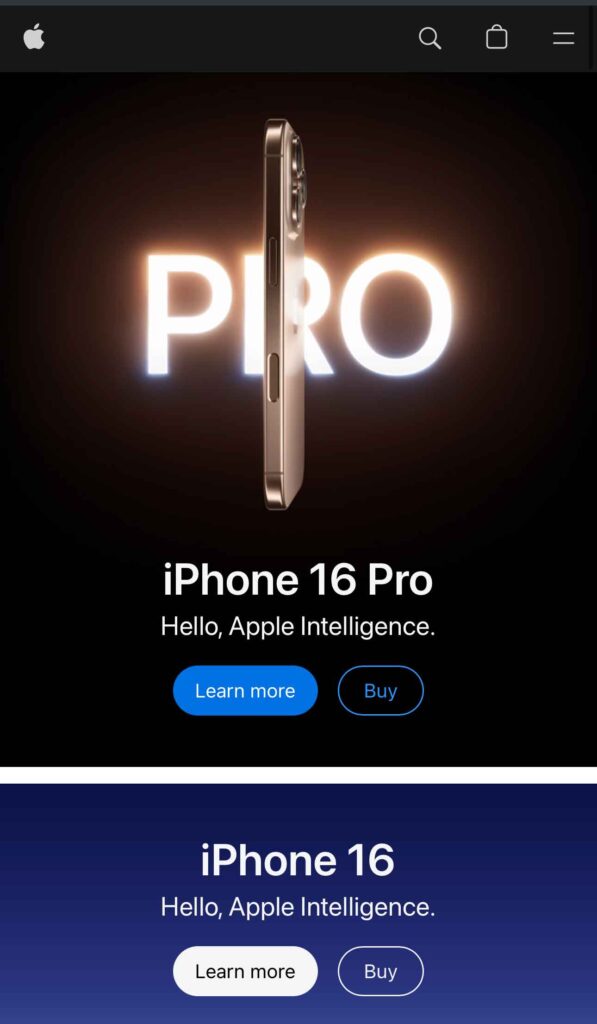Breaking into the competitive global market is a challenge for any business, but adapting to the mobile-first shift can be even more daunting for small companies aiming to establish themselves on an international level.
As mobile-first indexing changes the rules for search visibility, the stakes are higher than ever for businesses of all sizes. If a website doesn’t meet mobile-friendly standards, it risks falling behind competitors who prioritize this shift.
This article explores how international SEO strategies are evolving in light of mobile-first indexing and what this means for companies looking to capture a global audience.You’ll discover how mobile-first indexing changes strategies for global SEO and expands international reach.
What Is Mobile-First Indexing?
Mobile-first indexing means that Google primarily uses the mobile version of a site’s content for indexing and ranking. Essentially, Google considers mobile-friendly websites first, and if a website is not optimized for mobile, it might see its rankings drop.
For businesses providing international SEO services, this shift impacts their approach to optimizing content for diverse regions. Because mobile usage rates vary worldwide, adapting to mobile-first indexing requires not only technical optimization but also a deep understanding of each target market’s mobile landscape.
Why Does It Matter for SEO Today?
As SEO continues to evolve, the impact of mobile-first indexing has become more pronounced, shifting priorities and methods across the industry. This shift marks a change from the early desktop-centric approach to a strategy now shaped by mobile access and responsiveness.
For any business, especially smaller ones, this can mean rethinking web strategies to remain competitive. An international SEO company can help implement these necessary changes to reach a mobile-driven audience, ensuring visibility across global markets.
Reasons Mobile-First Indexing Matters for SEO:
- Increased Mobile Traffic: Mobile browsing has overtaken desktop use, with search engines giving preference to mobile-friendly sites. This trend boosts visibility for sites optimized for mobile-first, which is critical for reaching a wider audience.
- Enhanced User Experience (UX): Mobile-friendly websites are easier for users to navigate, leading to better engagement and lower bounce rates. Higher engagement signals search engines to rank these sites more favorably.
- Competitive Edge in International Markets: Businesses that optimize for mobile-first gain a significant advantage in international SEO. Mobile optimization expands access to diverse global audiences, enhancing the brand’s reach.
- Higher Conversion Rates on Mobile: Users on mobile devices often browse with intent, leading to quicker conversions. Prioritizing mobile-first indexing can streamline the purchase process, making it more likely that international users will complete transactions.
Global Trends in Mobile Internet Usage

Mobile internet usage has continued to rise globally, with more businesses focusing on mobile-first strategies to cater to an audience that prefers on-the-go browsing. Companies are adapting to this shift, and with the assistance of an international SEO agency, they can implement strategies that align with current trends and reach international audiences more effectively.
Prioritizing Speed and Performance
Businesses are focusing on faster loading times, as mobile users expect quick access to information. Google’s emphasis on Core Web Vitals underscores the importance of site speed in improving user experience and SEO rankings.
Emphasis on Localized Content
Localization has become a standard practice in international SEO. Many companies are developing region-specific content to connect with audiences in different parts of the world, enhancing relevance and boosting engagement.
Integration of Voice Search Optimization
With the rise of voice-enabled mobile devices, businesses are optimizing for voice search to capture this growing trend. This approach is especially effective in reaching users on the move who rely on hands-free access to information.
Enhanced Focus on Visual and Video Content
Video and visual content are in high demand, especially on mobile devices. Businesses are prioritizing mobile-friendly formats and optimizing visuals to improve load times, which can increase engagement and appeal to mobile users across various regions.
Best Mobile Website Design Examples
A strong mobile presence is crucial for effectively connecting with users in today’s digital landscape. Below are companies that excel in mobile website design, showcasing their optimization strategies, effectiveness, and standout features.
Apple

This site exemplifies a sleek, minimalist design emphasizing usability and aesthetics. Users enjoy high-quality images and simple navigation, which guide them effortlessly to products and information. Fast loading times ensure potential buyers can quickly access product details and make purchases, while seamless app integration allows for a smooth transition between browsing and shopping.
Etsy

With an engaging and user-friendly interface, Etsy effectively showcases a vast array of unique, handmade products. The responsive design adapts beautifully to any screen size, providing a consistent experience. Advanced search functionality and well-organized categories enable users to find what they’re looking for quickly, while vibrant images and detailed descriptions enhance user engagement.
Airbnb

Speed and usability define Airbnb’s mobile site, allowing users to browse listings and book accommodations easily. A clean interface facilitates filtering by location, price, and amenities, helping customers find suitable options. High-resolution images, user reviews, and real-time availability updates simplify the booking process, ensuring a positive user experience.
Nike

Dynamic content and personalized experiences characterize Nike’s mobile website. Bold visuals and interactive elements encourage exploration and engagement. An intuitive layout highlights product categories and promotions, while detailed descriptions and user ratings enhance confidence in purchasing decisions. Integration of loyalty programs offers rewards and personalized recommendations.
Domino’s

Designed for efficiency, Domino’s mobile site focuses on the ordering experience. Users can quickly access menu items and customize their orders. A prominent ‘Order Now’ button encourages immediate action, while real-time tracking of orders adds transparency. User-friendly features, such as saved favorite orders and personalized recommendations, streamline the overall process.
These examples demonstrate how effective mobile website design can enhance user experience, drive engagement, and support business success. By prioritizing usability, speed, and engaging content, these companies set a benchmark in mobile optimization that others can aspire to achieve.
Common Mobile Indexing Challenges
The shift to mobile-first indexing isn’t without its challenges. Many websites encounter obstacles in adapting to this mobile-centric approach, which can impact visibility and user experience if left unresolved. Recognizing these common challenges can help businesses anticipate issues and fine-tune their mobile strategies.
Common Challenges in Mobile Indexing:
- Responsive Design Issues: Responsive design is essential for mobile indexing, but inconsistencies in how elements display on various screen sizes can affect usability. Content or images may appear distorted or too small, which impacts user experience and search rankings.
- Page Speed and Load Times: Mobile users expect fast load times, but heavy media files or unoptimized code can lead to delays. Slow loading speeds result in higher bounce rates and lower rankings, especially on mobile.
- Improper Mobile Meta Tags: Incorrect or missing meta tags, like the viewport meta tag, can make mobile content harder to display correctly. This can reduce the site’s appeal on mobile and limit the effectiveness of its SEO.
- Content and Element Blockage: Some websites block specific elements, like images or JavaScript, on mobile, which search engines need to fully understand the site. Blocking important content hampers indexing, making it difficult for search engines to rank the site.
Tips for Adjusting Your SEO Strategy for Mobile Users
To fully optimize for mobile-first indexing, businesses need to rethink their SEO tactics, putting mobile functionality at the forefront. Crafting an international SEO strategy that considers mobile user needs and preferences can greatly enhance your site’s reach and engagement across global markets.
Best Practices for Mobile Optimization
- Prioritize Mobile Page Speed: Fast loading times are critical on mobile, where users expect instant access to content. Compressing images, minimizing CSS and JavaScript, and using a reliable hosting provider are some ways to enhance speed for mobile users.
- Optimize for Touch-Friendly Navigation: Mobile visitors need easy, touch-friendly navigation. Elements should be large enough to click without zooming in, and navigation bars should be simplified for smaller screens to improve usability.
- Use Readable Fonts and Proper Formatting: Text should be legible on mobile devices without requiring users to zoom. Selecting larger fonts, consistent line spacing, and adequate white space can significantly enhance readability on smaller screens.
- Leverage Accelerated Mobile Pages (AMP): AMP pages load faster and are designed to improve user experience on mobile. This format is especially beneficial for content-heavy sites like blogs or news, as it reduces load times, boosting SEO and engagement with mobile users.
How an SEO Company Can Help Small Businesses Be Ahead of Competitors
With mobile-first indexing taking priority, small businesses face the challenge of keeping up with larger competitors in search rankings. Partnering with an experienced SEO company offers targeted solutions, empowering smaller companies to stand out. Here are four ways a professional agency can help your business compete effectively:
- Advanced Mobile Optimization: SEO experts can implement mobile-focused strategies like improving load times, optimizing navigation, and ensuring mobile accessibility. These optimizations enhance user experience, which can boost rankings under mobile-first indexing criteria.
- Localized Keyword Strategy: Professionals can help develop a keyword plan tailored to your market, incorporating search terms relevant to local mobile searches. By focusing on precise, location-based keywords, your business can compete with larger companies that have broader keyword strategies.
- Adapted Mobile Content: SEO companies understand the importance of localized content. They can help craft mobile-optimized content that’s not only relevant but also easily accessible to a wider audience, strengthening your site’s performance internationally.
- Regular Performance Tracking and Updates: An international SEO consultant provides ongoing monitoring to track your site’s mobile SEO success, adapting strategies as trends and algorithms evolve. Regular updates ensure your business stays competitive, even against larger brands that may struggle to keep up with rapid mobile optimization shifts.
In an era where mobile-first indexing drives search visibility, working with a skilled agency like The Ad Firm can make all the difference for small businesses looking to compete. Small businesses face significant challenges competing with larger companies in today’s market. However, by adopting effective SEO strategies, you can create a distinct presence in your industry.
These strategies will not only help you stand out but also foster stronger connections with your audience. For tailored support in achieving these goals, consider reaching out to The Ad Firm.









